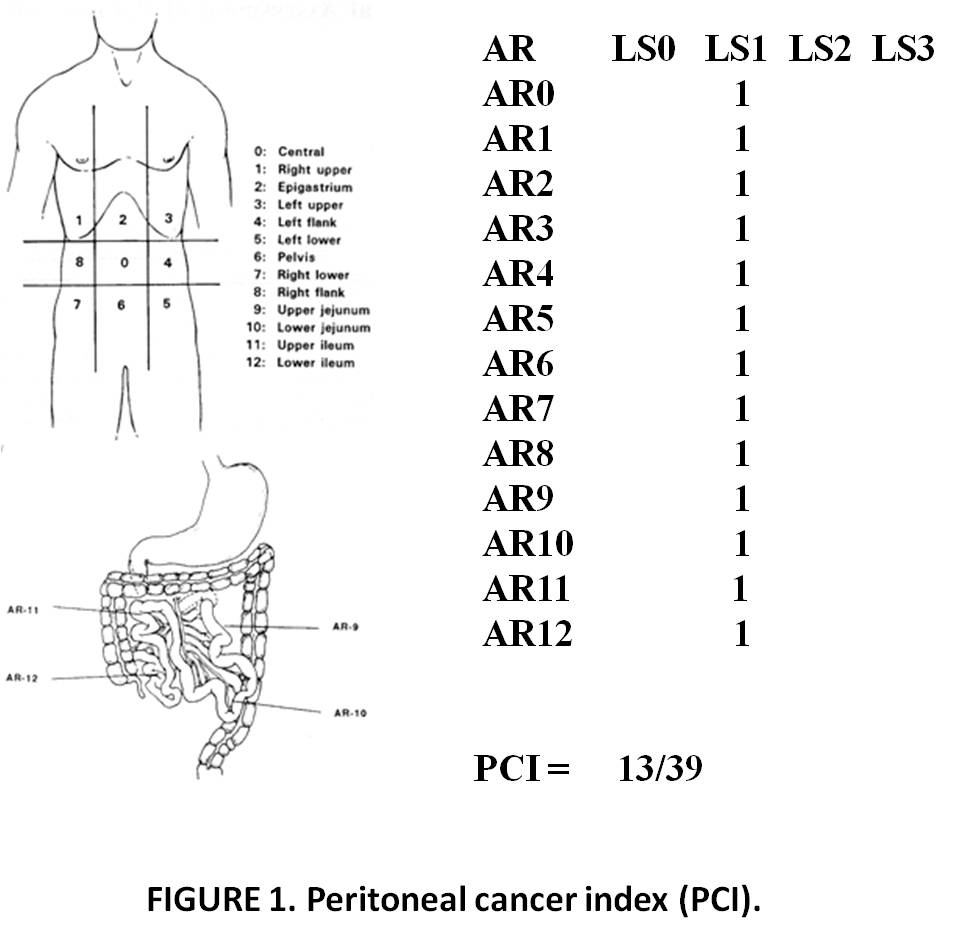-
Paper Information
- Paper Submission
-
Journal Information
- About This Journal
- Editorial Board
- Current Issue
- Archive
- Author Guidelines
- Contact Us
International Journal of Surgical Research
2015; 4(1): 4-6
doi:10.5923/j.surgery.20150401.02
Natural Conception after Fertility-Conserving Cytoreductive Surgery (FCCRS) and Heated Intraperitoneal Chemotherapy (HIPEC) with the Oxaliplatin Protocol: A Case Report
Gómez-Portilla A. 1, Olabarria I. 2, Martín E. 2, Gómez-Martínez de Lecea C. 3, Martínez de Lecea C. 4, Guede N. 1, Moraza N. 1, Kvadatze M. 1, Reyhani A. 2
1Peritoneal Carcinomatosis Program, Hospital San José, Vitoria, Spain
2Department of General Surgery, Hospital Santiago Apóstol, Vitoria, Spain
3Faculty of Medicine, University of Navarra, Navarra, Spain
4Department of Internal Medicine, Hospital Quirón, Vitoria, Spain
Correspondence to: Gómez-Portilla A. , Peritoneal Carcinomatosis Program, Hospital San José, Vitoria, Spain.
| Email: |  |
Copyright © 2015 Scientific & Academic Publishing. All Rights Reserved.
After 30 years, the combined treatment strategy of cytoreductive surgery (CRS) and heated intraperitoneal chemotherapy (HIPEC) has increased the survival expectancy of carcinomatosis patients. Fertility-sparing cytoreductive surgery (FSCRS) may now be considered in some instances mainly in young women who desire future pregnancy. The aim of this report is to record the first case of natural conception with uneventful term pregnancy and delivery following FSCRS and HIPEC with the oxaliplatin protocol in a pseudomyxoma peritonei (PMP) patient. We report the case of a 31 year-old female affected of PMP referred to our department for further treatment. In January 2007, she underwent an extensive CRS – with a FSCRS during the pelvic peritonectomy – and HIPEC according to the oxaliplatin protocol. Her postoperative recovery was uneventful. Two years later the patient had natural pregnancy and a caesarean delivery with no evidence of residual disease. Seven years after her FRSCRS with HIPEC, the patient remains disease-free. To our knowledge, this is the first report of natural conception with successful term delivery following oxaliplatin protocol. Based on our own experience and on the ten clinical cases previously reported in the literature, it appears that FSCRS may now be considered a good alternative and that childbearing should even be possible in selected cases of young women with peritoneal carcinomatosis.
Keywords: Natural conception, Cytoreductive surgery, Heated intraperitoneal chemotherapy, Oxaliplatin protocol
Cite this paper: Gómez-Portilla A. , Olabarria I. , Martín E. , Gómez-Martínez de Lecea C. , Martínez de Lecea C. , Guede N. , Moraza N. , Kvadatze M. , Reyhani A. , Natural Conception after Fertility-Conserving Cytoreductive Surgery (FCCRS) and Heated Intraperitoneal Chemotherapy (HIPEC) with the Oxaliplatin Protocol: A Case Report, International Journal of Surgical Research, Vol. 4 No. 1, 2015, pp. 4-6. doi: 10.5923/j.surgery.20150401.02.
1. Introduction
- The combined treatment strategy with cytoreductive surgery (CRS) and HIPEC, in use for more than 30 years, has increased the survival expectancy in selected carcinomatosis patients [1, 2]. PMP, primary peritoneal mesothelioma, and ovarian carcinomatosis are the most common causes of diffuse peritoneal malignancies amongst women in childbearing age. Due to the prospects of long- term survival, fertility preservation surgery –albeit challenging– can be of particular importance in this group of young female patients. Childbearing after CRS and HIPEC is possible in women conserving their genital organs after the surgical procedure. Up to now there have only been ten reported cases of pregnancy after FSCRS and adjuvant HIPEC [3-9]. To our knowledge, this is the first known case of natural conception, uneventful pregnancy, and successful delivery following FSCRS and HIPEC with the oxaliplatin protocol.
2. Case Report
- A 31 year-old female patient was unexpectedly diagnosed with a diffuse PMP from appendiceal origin during an appendectomy in another institution. The patient was referred to our peritoneal carcinomatosis program for assessment and further treatment. On 2 January 2007 the patient underwent an abdominal exploration followed by an extensive CRS including: total anterior parietal peritonectomy with resection of tumor nodules in the abdominal wall scar, greater and lesser omentectomy, right upper quadrant peritonectomy –with total diaphragm stripping, partial glissectomy, and cholecystectomy– and cecectomy. Lastly, a total pelvic peritonectomy with a FSCRS -with genital preservation - was performed. The peritoneal cancer index score was 13 (out of a maximum of 39) [10], figure. 1.
 | Figure 1. Peritoneal cancer index (PCI) |
3. Conclusions
- The aggressive multimodal medical strategy of CRS and HIPEC has improved the prognosis of some peritoneal malignancies. With this optimal treatment, PMP patients with well-differentiated appendiceal mucinous carcinoma may be expected to have a 20-year survival of 50% [11].The standard pelvic peritonectomy during a CRS procedure for peritoneal surface malignancies involves an abdominal hysterectomy and bilateral oophorectomy in women. Due to the possibility of long-term survival in carcinomatosis patients treated with this combined strategy, preservation of fertility can now be considered in some selected instances, mainly in young women at reproductive age.Unlike intravenous chemotherapy, spontaneous pregnancy following intraperitoneal chemotherapy has rarely been reported. While intraperitoneal chemotherapy has been in use for more than 30 years, to our knowledge, this is the first reported case of natural conception with uneventful term pregnancy and delivery following FSCRS and HIPEC with the oxaliplatin protocol in a PMP patient.Based on our own experience and the previously reported cases in the literature, it appears that FSCRS may now be seen as a good alternative, and future fertility can and must be now considered in selected young women with PMP.
 Abstract
Abstract Reference
Reference Full-Text PDF
Full-Text PDF Full-text HTML
Full-text HTML